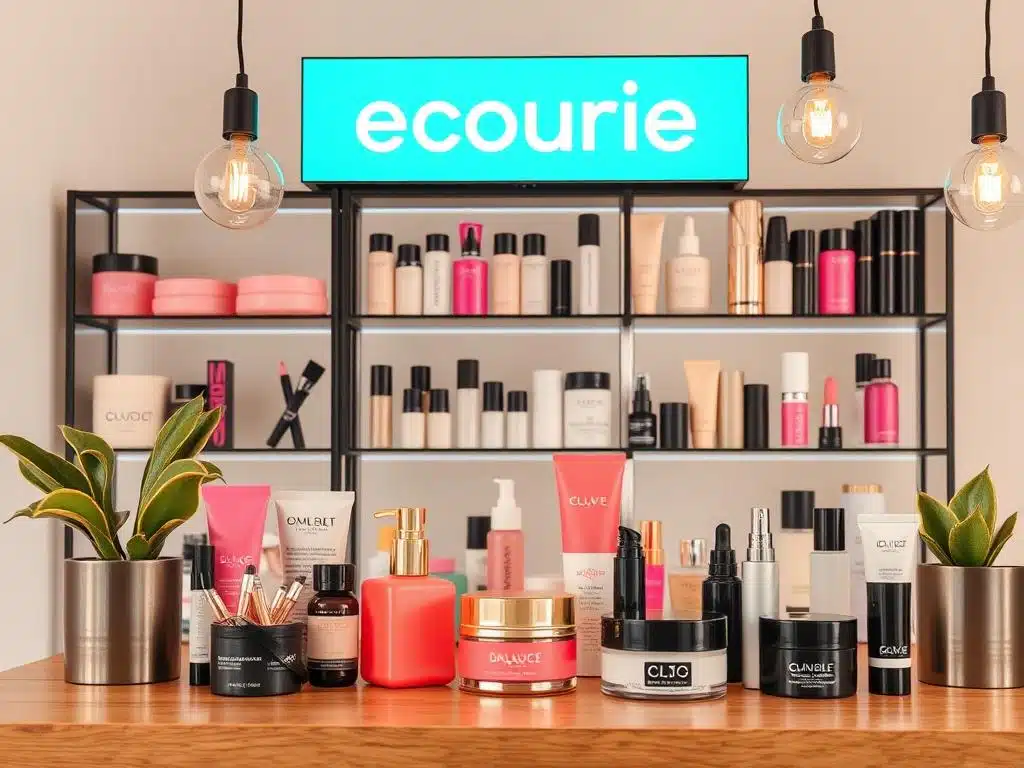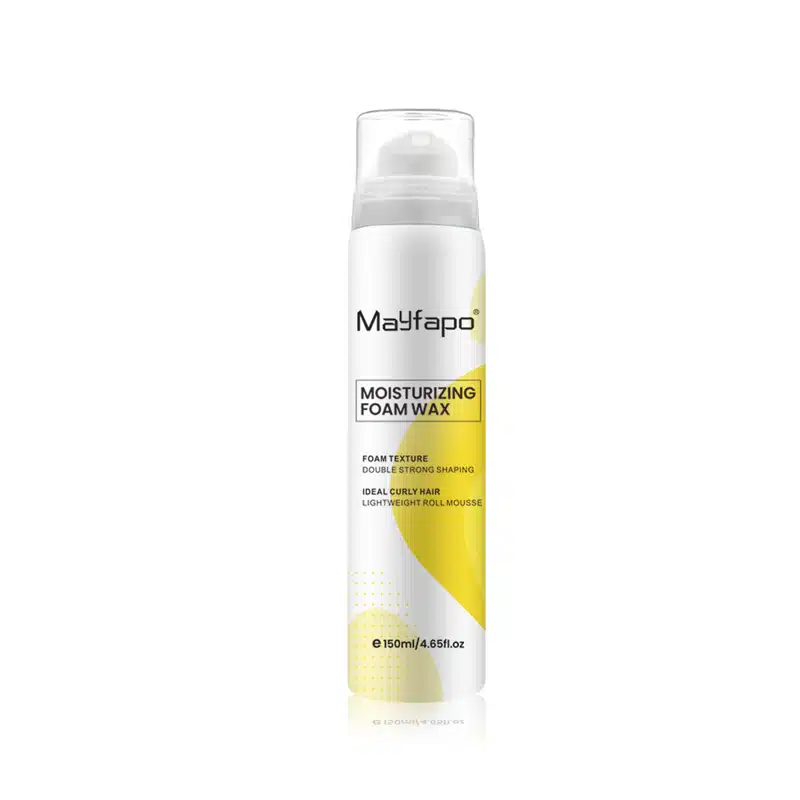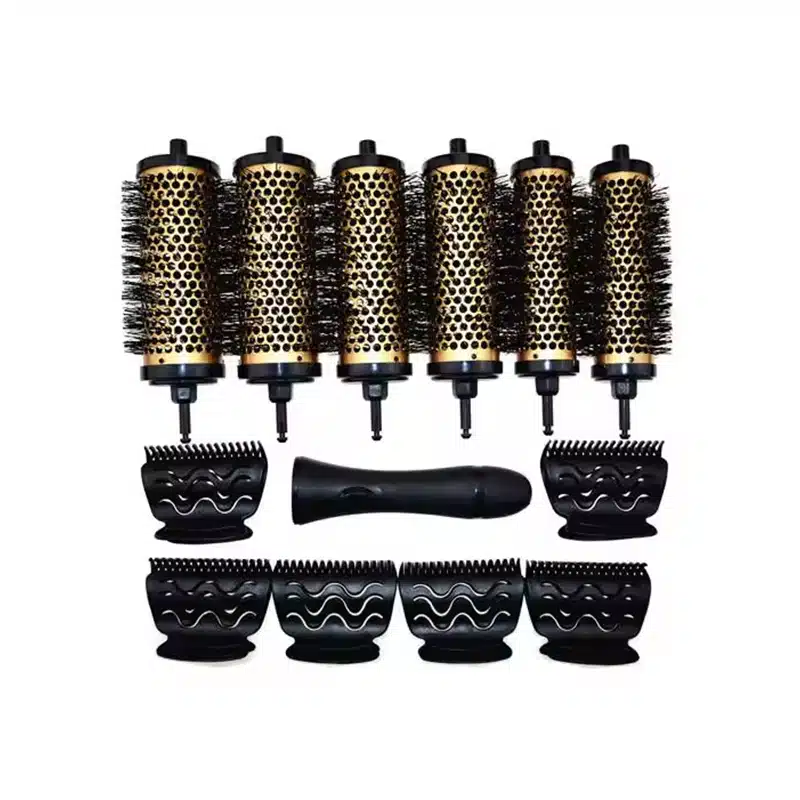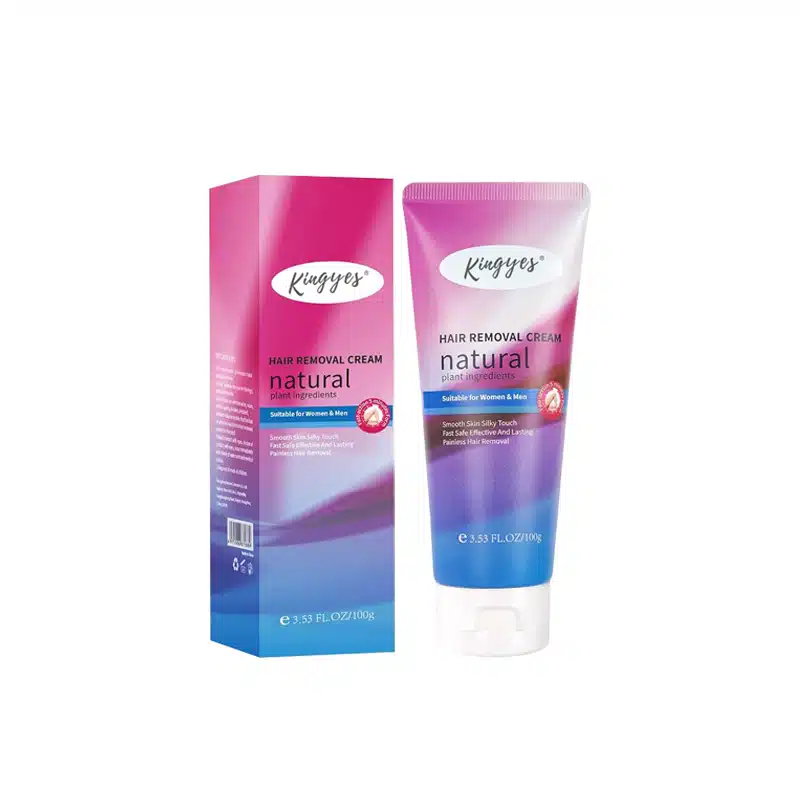
How To Start An Ecommerce Beauty Business?
Table of Contents
Launching Your Empire: How to Start an Ecommerce Beauty Brand in 2025
The beauty industry is booming, and the rise of ecommerce has opened up unprecedented opportunities for aspiring entrepreneurs. Want to learn how to start your own ecommerce beauty brand? This comprehensive guide will walk you through the essential steps to start an ecommerce beauty brand from scratch. We’ll cover everything from identifying your niche and developing your beauty product to building your online store, crafting effective marketing strategies, and navigating the legal landscape. Whether you’re passionate about skincare, makeup, or other cosmetic products, this article will provide you with the knowledge and tools you need to launch a successful ecommerce beauty brand and make your mark on the global beauty market.
Identifying Your Niche and Target Market: Who Are You Selling To?
Before you start an ecommerce business, the first step in launching a successful ecommerce beauty brand is to identify your niche and target market. The beauty industry is vast and competitive, so focusing on a specific niche will help you stand out and target your marketing efforts more effectively. Consider what makes your brand unique. What specific need will your beauty product fulfill?
To identify your niche, consider the following:
- Product Category: Will you focus on skincare, makeup, hair care, fragrance, or a combination? Will you specialize in a specific category, such as clean beauty, natural beauty, or products for specific skin tones?
- Target Market Demographics: Who is your ideal customer? Consider their age, gender, location, income level, lifestyle, and values. You may choose to focus on a specific demographic, such as Gen Z, millennials, or mature consumers.
- Target Market Psychographics: What are your target customers’ interests, needs, pain points, and aspirations? What are their beauty concerns and goals? What are their values and beliefs?
- Market Gaps: Is there a gap in the market that your brand can fill? Are there any underserved needs or unmet demands that you can address? This could be a specific ingredient, a unique product format, or a particular beauty philosophy, such as sustainability or cruelty-free.
Conducting thorough market research is essential for identifying your niche and understanding your target market. This may involve analyzing competitor brands, studying industry trends, surveying potential customers, and monitoring social media conversations. The more you know about your niche and your target market, the better you can tailor your products, messaging, and marketing strategies to resonate with them. There are many beauty ecommerce brands out there, so make sure your brand stands out.
Developing Your Beauty Product Line: What Will You Offer?
Once you’ve identified your niche and target market, the next step is to develop your beauty product line. This involves deciding which products you will offer, formulating them, and designing the packaging. Your product line should align with your brand identity, cater to the needs of your target market, and reflect current beauty ecommerce trends.
When developing your beauty product line, consider the following:
- Product Uniqueness: What makes your products different from what’s already on the market? This could be a unique ingredient, a novel formulation, a specific benefit, or a unique selling proposition (USP).
- Product Quality: Ensure that your products are made with high-quality ingredients and are safe, effective, and stable. Product testing is essential to validate your product’s claims and ensure its quality.
- Product Development: You may choose to formulate your own products or work with a chemist or a cosmetic lab to develop custom formulations. Alternatively, you could opt for private label products, where you purchase existing formulations and brand them as your own.
- Packaging: Your product packaging should be visually appealing, functional, and reflective of your brand identity. It should also comply with all relevant labeling regulations. Consider using sustainable packaging options to appeal to environmentally conscious consumers.
- Pricing: Determine your pricing strategy based on your costs, your target market’s willingness to pay, and the pricing of competitor products.
- Product Descriptions: Write compelling and informative product descriptions for your ecommerce website. Highlight the key benefits, ingredients, and usage instructions. Use high-quality product photos that showcase your products in the best possible light.
Your initial product line doesn’t need to be extensive. You can start with one or two standout products and expand your line as your business grows. The key is to offer high-quality products that meet the needs of your target market and align with your brand values. Starting your own skin care line can be challenging, but focusing on these key points will give you a good foundation. Starting a skin care line is a popular choice for many beauty entrepreneurs.
Sourcing and Manufacturing: How Will You Create Your Products?
Once you have developed your product formulations, you need to determine how you will source your ingredients and manufacture your products. You have several options:
- In-House Manufacturing: If you have the expertise, resources, and facilities, you can manufacture your products in-house. This gives you complete control over the production process but requires significant investment in equipment, space, and personnel.
- Contract Manufacturing: You can partner with a contract manufacturer that specializes in cosmetic or skincare production. They will handle the manufacturing process according to your specifications. This is a popular option for beauty startups as it allows you to focus on other aspects of your business, such as marketing and sales. This is how many beauty ecommerce brands operate.
- Private Label: As mentioned earlier, private label involves purchasing existing formulations from a manufacturer and branding them as your own. This can be a quicker and more affordable way to launch your brand, but it offers less customization and differentiation.
- Dropshipping: In this model, you partner with a supplier who manufactures and ships the products directly to your customers. You don’t handle any inventory, which can reduce your upfront costs and risks. However, you have less control over product quality, customization, and shipping times.
When choosing a manufacturing option, consider factors such as cost, scalability, quality control, lead times, and your own expertise and resources. Regardless of which option you choose, it’s crucial to ensure that your manufacturing process complies with Good Manufacturing Practices (GMP) to ensure product safety and quality. You also need to source high-quality ingredients from reputable suppliers. You need to decide whether you will start manufacturing yourself or work with a partner.
Building Your Brand Identity: What Makes You Stand Out?
In the crowded beauty market, a strong brand identity is essential for differentiating yourself from competitors and connecting with your target market. Your brand identity encompasses your brand name, logo, visual aesthetic, messaging, values, and overall personality. Beauty ecommerce brands need to have a strong identity. It’s what makes your brand recognizable and memorable. Your brand identity should be authentic, consistent, and reflective of your niche and target audience.
To build a strong brand identity, consider the following:
- Brand Name: Choose a brand name that is memorable, easy to pronounce, and relevant to your niche and products. It should also be available as a domain name and social media handle.
- Logo and Visuals: Design a logo and visual aesthetic that aligns with your brand personality and appeals to your target market. This includes your color palette, font choices, and imagery.
- Brand Voice: Define your brand voice and messaging. How will you communicate with your customers? What tone will you use (e.g., friendly, authoritative, playful)? What key messages do you want to convey about your brand and products?
- Brand Values: Identify the core values that underpin your brand. This could include a commitment to sustainability, cruelty-free practices, inclusivity, or other principles that resonate with your target market.
- Brand Story: Craft a compelling brand story that explains why you started your beauty brand, what makes you unique, and what you stand for. This can help you connect with customers on an emotional level.
Your brand identity should be consistently applied across all touchpoints, including your ecommerce website, product pages, packaging, social media, and marketing materials. A strong and consistent brand identity helps build recognition, trust, and loyalty among your target customers. Fenty Beauty, for example, has done a great job of establishing a brand identity.
Setting Up Your Ecommerce Store: Choosing the Right Platform
Your ecommerce website will be the primary sales channel for your beauty brand, so it’s crucial to choose the right platform and design it for optimal user experience and conversion. You’ll want to create a beauty ecommerce store that is visually appealing, easy to navigate, and optimized for sales. An online beauty business needs to have a user-friendly website.
When setting up your online store, consider the following:
- Ecommerce Platform: There are many ecommerce platforms to choose from, including Shopify, WooCommerce, Magento, and BigCommerce. Shopify is a popular choice for beauty brands due to its ease of use, customization options, and app ecosystem. Consider factors such as cost, scalability, features, design flexibility, and ease of use when choosing a platform. Like Shopify, there are other platforms that offer similar services.
- Website Design: Your ecommerce website should be visually appealing, on-brand, and easy to navigate. Invest in high-quality product photography and create a user-friendly layout that makes it easy for customers to find and purchase your products. Your website should also be mobile-responsive, as many consumers shop on their smartphones.
- Product Pages: Create detailed and compelling product pages that showcase your products’ features, benefits, and ingredients. Include high-quality images, videos, and customer reviews to build trust and encourage purchases. Your product descriptions should be well-written.
- Shopping Cart and Checkout: Optimize your shopping cart and checkout process to make it as seamless and frictionless as possible. Offer multiple payment options, provide clear shipping information, and minimize the number of steps required to complete a purchase.
- Customer Service: Provide excellent customer service through various channels, such as live chat, email, and phone. Respond promptly to customer inquiries and resolve any issues quickly and efficiently.
Your ecommerce website is your virtual storefront, so it’s essential to invest in creating a professional, user-friendly, and conversion-optimized online presence. It is important that you create a successful online presence.
Crafting Your Ecommerce Strategy: How Will You Drive Online Sales?
A well-defined ecommerce strategy is essential for driving online sales and growing your beauty brand. Your ecommerce strategy should encompass your overall business goals, target audience, product positioning, pricing, distribution, and promotional activities. Consider also how you will encourage repeat business.
Key components of an effective ecommerce strategy include:
- Search Engine Optimization (SEO): Optimize your ecommerce website and product pages for relevant keywords to improve your ranking in search engine results. This will help drive organic traffic to your online store.
- Paid Advertising: Consider using paid advertising platforms, such as Google Ads and social media ads, to reach your target market and drive traffic to your website. Experiment with different ad formats and targeting options to find what works best for your brand.
- Content Marketing: Create valuable and engaging content, such as blog posts, videos, and tutorials, related to your niche and products. This can help attract and educate potential customers, establish your brand as an authority in the beauty industry, and drive traffic to your online store.
- Email Marketing: Build an email list and use email marketing to nurture leads, promote new products, offer exclusive discounts, and build relationships with your customers.
- Social Media Marketing: Leverage social media platforms, such as Instagram, Facebook, TikTok, and Pinterest, to build brand awareness, engage with your audience, and drive traffic to your ecommerce website.
- Influencer Marketing: Partner with beauty influencers who align with your brand values and have a strong following among your target market. Influencer marketing can be an effective way to reach new audiences and build credibility. This is a very popular way for beauty and cosmetic brands to promote their products.
- Customer Loyalty Programs: Implement a customer loyalty program to reward repeat customers and encourage them to continue purchasing from your brand. This could include offering points for every purchase, exclusive discounts, or early access to new products.
Your ecommerce strategy should be tailored to your specific business goals, target market, and product line. Regularly analyze your results and adjust your strategy as needed to optimize your performance and achieve your sales targets.
Marketing Strategies for Beauty Brands: Reaching Your Potential Customers
Effective marketing is crucial for the success of any ecommerce beauty brand. Your marketing efforts should focus on building brand awareness, driving traffic to your online store, and converting visitors into customers. Marketing strategies for beauty need to be creative. You will need to find marketing strategies that work for your brand. Marketing is one of the most important aspects of building a successful beauty brand.
Here are some effective marketing strategies for beauty brands:
- Influencer Marketing: Partner with beauty influencers who have a strong following among your target market. Influencers can create authentic and engaging content featuring your products, such as reviews, tutorials, and unboxing videos. This can help to build brand awareness, credibility, and social proof.
- Social Media Marketing: Leverage social media platforms, such as Instagram, Facebook, TikTok, and Pinterest, to showcase your products, engage with your audience, and build a community around your brand. Use high-quality visuals, compelling captions, and relevant hashtags to maximize your reach and engagement. Beauty is a popular topic on social media.
- Content Marketing: Create valuable and informative content related to your niche and products, such as blog posts, videos, tutorials, and how-to guides. This can help to attract and educate potential customers, establish your brand as an authority in the beauty industry, and drive organic traffic to your website. You can even use this content in your product descriptions.
- Email Marketing: Build an email list by offering incentives, such as discounts, free samples, or exclusive content, in exchange for signing up. Use email marketing to nurture leads, promote new products, announce sales and promotions, and share valuable content with your subscribers.
- Paid Advertising: Consider using paid advertising platforms, such as Google Ads, Facebook Ads, and Instagram Ads, to reach a wider audience and drive targeted traffic to your online store. Experiment with different ad formats, targeting options, and messaging to optimize your campaigns.
- Public Relations: Seek opportunities to get your brand featured in relevant publications, blogs, and media outlets. This could involve sending out press releases, pitching stories to journalists, or participating in industry events.
- Collaborations: Partner with other brands or businesses in your niche to cross-promote your products and reach new audiences. This could involve joint giveaways, co-branded products, or content collaborations.
Your marketing mix will depend on your specific brand, target market, and budget. It’s essential to track your results and analyze which marketing strategies are most effective in driving traffic, engagement, and sales. Use this data to refine your approach and optimize your marketing spend.
Navigating Legal and Regulatory Requirements: Ensuring Compliance
When starting an ecommerce beauty brand, it’s crucial to be aware of and comply with all relevant legal and regulatory requirements. These requirements vary by country and region but generally cover areas such as product safety, labeling, cosmetic ingredients, and business registration. Cosmetic regulations are in place to protect consumers and ensure product safety.
Key legal and regulatory considerations for ecommerce beauty brands include:
- Product Safety Regulations: Ensure that your products comply with all applicable safety regulations in your target markets. This may involve conducting safety assessments, testing for restricted substances, and following Good Manufacturing Practices (GMP).
- Ingredient Regulations: Be aware of any restrictions or prohibitions on specific cosmetic ingredients in your target markets. Some ingredients may be banned or subject to concentration limits due to safety concerns.
- Labeling Requirements: Ensure that your product labels comply with all relevant labeling regulations. This typically includes providing a clear and accurate ingredient list, usage instructions, warning statements, and the net quantity of contents.
- Business Registration and Licenses: Depending on your location and business structure, you may need to register your business, obtain a tax identification number, and obtain relevant licenses or permits. Registering your business is essential.
- Intellectual Property: Protect your intellectual property, such as your brand name, logo, and product formulations, by registering trademarks and patents as appropriate.
- Data Privacy and Security: If you collect and store customer data, you must comply with relevant data privacy and security regulations, such as the General Data Protection Regulation (GDPR) in the European Union and the California Consumer Privacy Act (CCPA) in California.
- Advertising and Marketing Regulations: Ensure that your advertising and marketing claims are truthful, not misleading, and comply with relevant regulations. Avoid making unsubstantiated claims about your products’ efficacy or benefits.
It’s advisable to consult with a legal professional who specializes in the cosmetics industry to ensure that your ecommerce beauty brand is fully compliant with all applicable laws and regulations. This will help you avoid potential legal issues and build a reputable and trustworthy brand.
Fulfilling Orders and Managing Inventory: Keeping Customers Happy
Efficient order fulfillment and inventory management are essential for the success of your ecommerce beauty brand. You need to have systems in place to process orders quickly, ship them accurately, and manage your inventory levels effectively to avoid stockouts or overstocking. Many beauty ecommerce brands struggle with this aspect of running a business.
Key considerations for order fulfillment and inventory management include:
- Order Processing: Implement a streamlined order processing system that allows you to quickly and accurately process orders as they come in. This may involve integrating your ecommerce platform with your inventory management system and shipping software.
- Inventory Management: Use an inventory management system to track your inventory levels in real-time, set reorder points, and forecast demand. This will help you avoid stockouts, which can lead to lost sales and customer dissatisfaction, and overstocking, which can tie up your capital and increase storage costs.
- Shipping: Choose reliable shipping carriers that offer competitive rates and fast delivery times. Provide customers with tracking information so they can monitor the status of their orders. Consider offering free shipping or other shipping promotions to incentivize purchases.
- Packaging: Use appropriate packaging materials to protect your products during shipping. Consider using branded packaging to enhance the unboxing experience and reinforce your brand identity.
- Returns and Exchanges: Establish a clear and customer-friendly return and exchange policy. Make it easy for customers to return or exchange products if they are not satisfied. Process returns and exchanges promptly and efficiently to maintain customer satisfaction.
- Customer Service: Provide excellent customer service throughout the order fulfillment process. Respond promptly to customer inquiries about their orders, shipping status, and any issues that may arise.
Efficient order fulfillment and inventory management are crucial for maintaining customer satisfaction, encouraging repeat business, and building a positive reputation for your ecommerce beauty brand. By streamlining your operations and providing a seamless customer experience, you can increase efficiency, reduce costs, and foster customer loyalty.
Scaling Your Ecommerce Beauty Brand: Growing Your Business
Once your ecommerce beauty brand is up and running, your focus will shift to scaling your business and growing your customer base. Scaling requires careful planning, strategic decision-making, and a willingness to adapt and evolve as your business grows.
Here are some strategies for scaling your ecommerce beauty brand:
- Expand Your Product Line: Introduce new products that complement your existing line and cater to the evolving needs of your target market. This could involve launching new variations of your best-selling products, introducing new product categories, or developing seasonal or limited-edition collections.
- Increase Marketing Efforts: As your business grows, you’ll need to ramp up your marketing efforts to reach a wider audience and drive more traffic to your online store. Consider increasing your budget for paid advertising, expanding your social media presence, investing in influencer marketing, and exploring new marketing channels. Beauty influencers can help you grow your brand.
- Improve Website Conversion Rate: Continuously optimize your ecommerce website to improve the conversion rate. This could involve A/B testing different elements of your website, such as product page layouts, headlines, and call-to-action buttons, to see what drives the most conversions. You can also implement strategies such as abandoned cart emails and personalized product recommendations to encourage customers to complete their purchases.
- Build Brand Loyalty: Focus on building strong relationships with your customers and fostering brand loyalty. This could involve implementing a loyalty program, offering personalized recommendations and promotions, providing exceptional customer service, and creating a sense of community around your brand. Encourage customer reviews and testimonials to build social proof.
- Explore New Sales Channels: Consider expanding beyond your own ecommerce website and exploring other sales channels, such as online marketplaces (e.g., Amazon, Etsy), social media platforms (e.g., Instagram Shopping, Facebook Shops), and even physical retail partnerships.
- Automate and Outsource: As your business grows, look for opportunities to automate or outsource tasks that are time-consuming or require specialized expertise. This could include using marketing automation tools, hiring a virtual assistant, outsourcing customer service, or partnering with a fulfillment center to handle your shipping and logistics.
- Seek Funding: If you need additional capital to scale your business, consider seeking funding from investors, applying for small business loans, or exploring crowdfunding options.
- Monitor Key Metrics: Track and analyze key performance indicators (KPIs) such as website traffic, conversion rate, customer acquisition cost, customer lifetime value, and average order value. Use this data to make informed decisions about your business and identify areas for improvement.
Scaling an ecommerce beauty brand requires a combination of strategic planning, effective marketing, operational efficiency, and a customer-centric approach. By continuously monitoring your performance, adapting to market changes, and focusing on providing value to your customers, you can build a successful and sustainable beauty business.
Key Things to Remember:
- Starting an ecommerce beauty brand requires careful planning, research, and execution.
- Identifying your niche and target market is crucial for tailoring your products, messaging, and marketing efforts.
- Developing a unique and high-quality beauty product line that aligns with your brand identity and meets the needs of your target customers is essential.
- Choosing the right manufacturing option (in-house, contract manufacturing, private label, or dropshipping) depends on your resources, expertise, and business goals.
- Building a strong brand identity involves creating a memorable brand name, logo, visual aesthetic, voice, values, and story that resonate with your target market.
- Setting up your ecommerce store on a platform like Shopify requires careful consideration of design, user experience, product pages, shopping cart, checkout process, and customer service.
- Crafting an effective ecommerce strategy involves leveraging SEO, paid advertising, content marketing, email marketing, social media, influencer marketing, and customer loyalty programs.
- Navigating legal and regulatory requirements, such as product safety regulations, ingredient restrictions, labeling requirements, and business registration, is crucial for compliance.
- Efficient order fulfillment and inventory management are essential for customer satisfaction, repeat business, and operational efficiency.
- Scaling your ecommerce beauty brand involves expanding your product line, increasing marketing efforts, improving website conversion rates, building brand loyalty, exploring new sales channels, automating and outsourcing tasks, seeking funding, and monitoring key metrics.
By following these guidelines and staying attuned to the ever-evolving beauty and ecommerce landscape, you can increase your chances of building a thriving and successful ecommerce beauty brand. Remember that success in the beauty ecommerce industry requires a combination of passion, perseverance, adaptability, and a customer-centric approach.
Comments
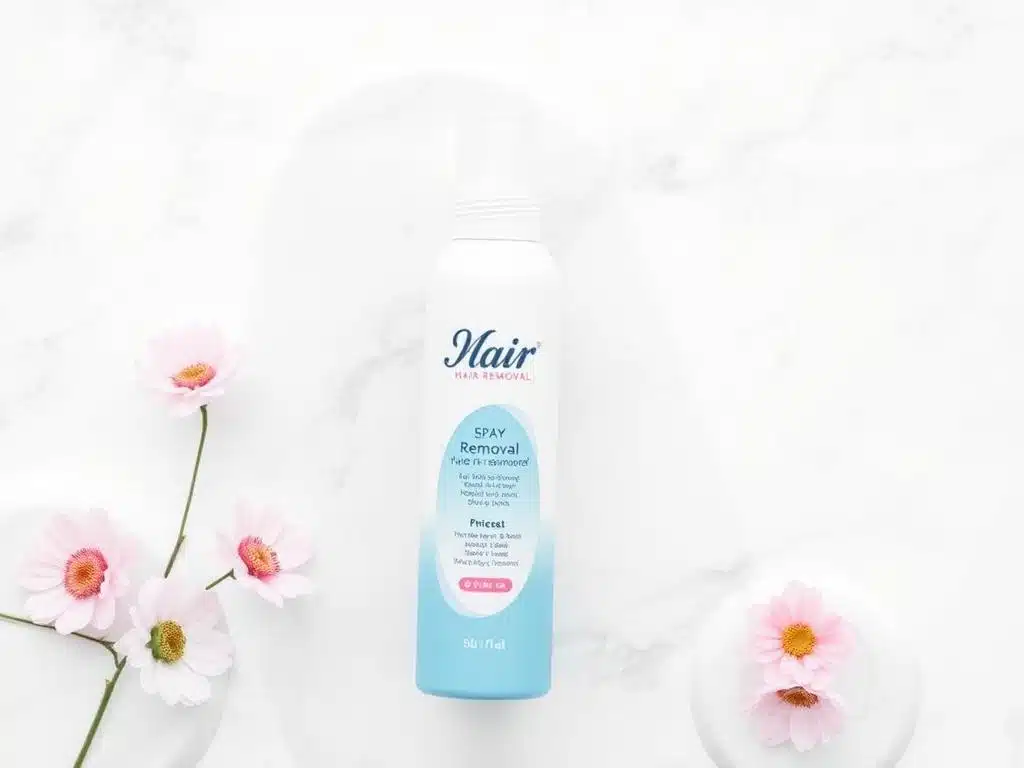
Who Owns Nair Hair Removal?
Nair™ is a household name in the world of hair removal, synonymous with creams, lotions, and waxes that promise to remove unwanted hair.
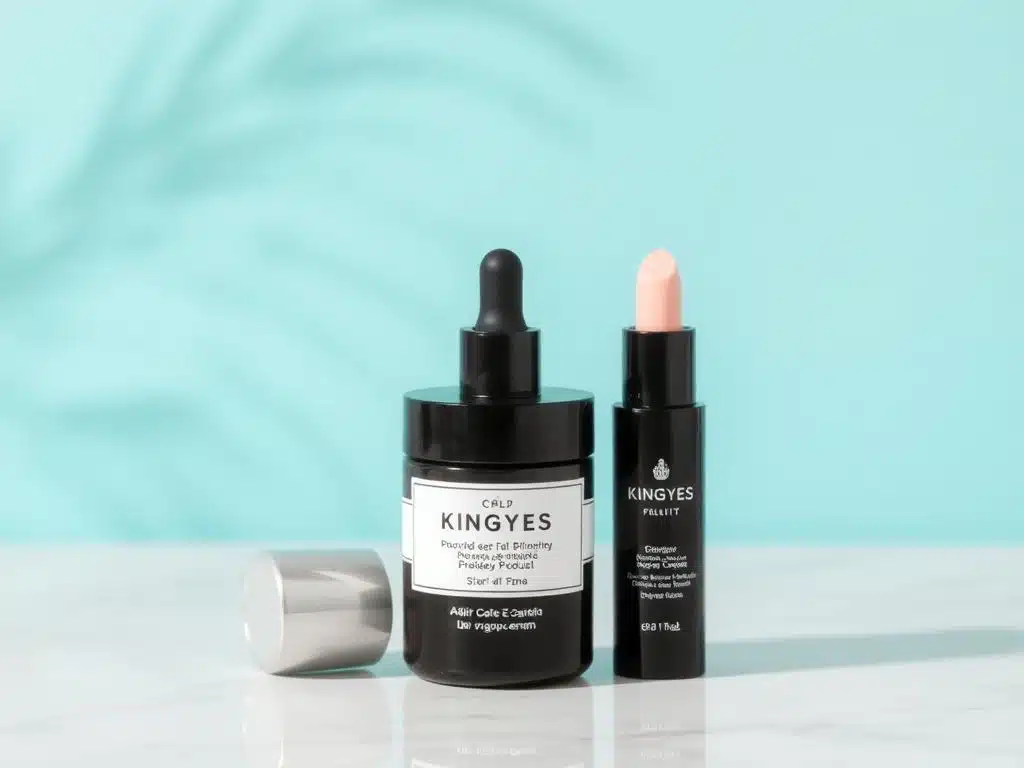
Top 10 Beauty Brands In Russia
Russia’s beauty market is a fascinating blend of traditional beauty secrets, international influences, and a growing emphasis on natural and organic ingredients.
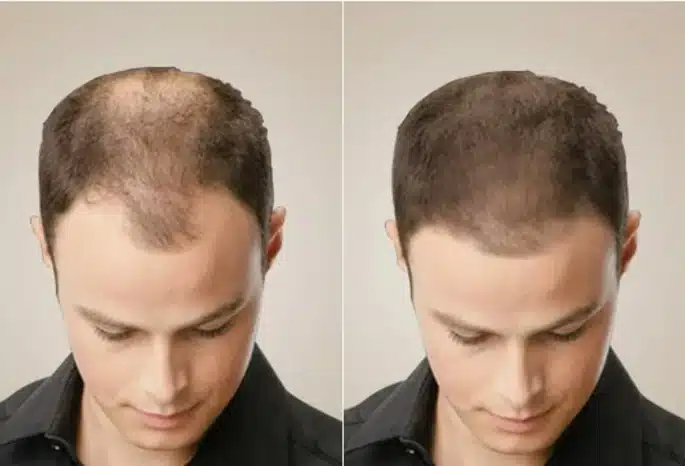
Can I Spray My Whole Head With Root Touch Up?
Have you ever wondered if you can spray your whole head with root touch-up?

What Brand Of Hair Color Do Salons Use?
Choosing the right hair color is essential for achieving the perfect color and maintaining hair health.
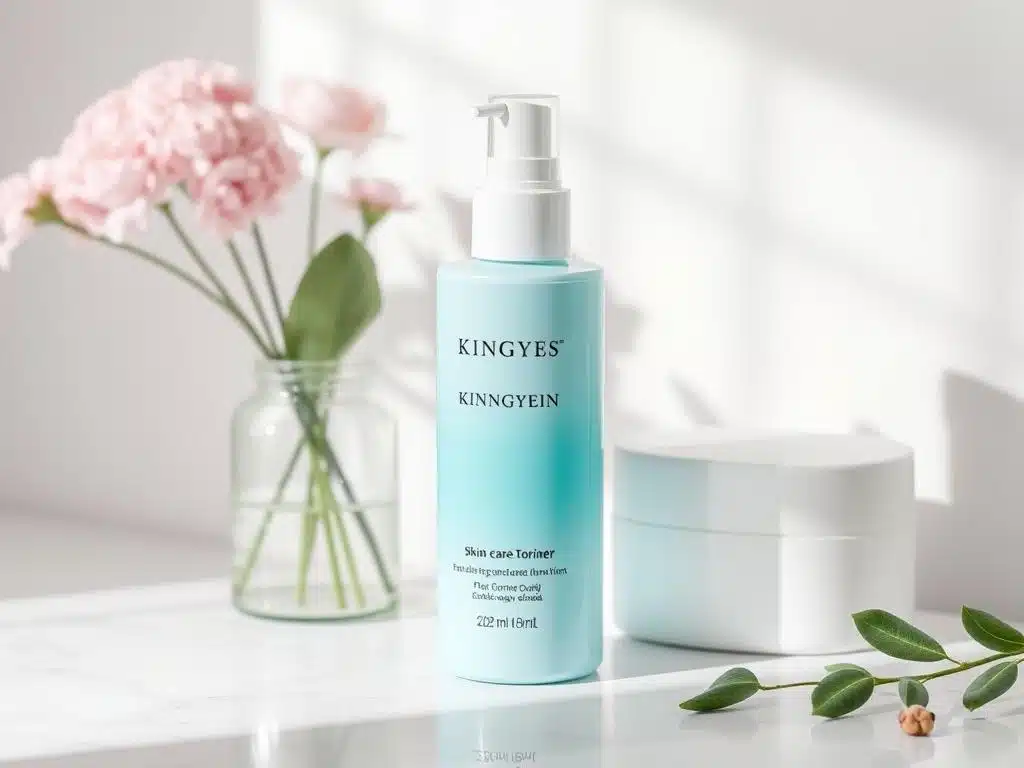
What Is A Skin Care Toner?
In the ever-expanding world of skincare, toners have emerged as a staple in many beauty routines.
- +86 151 1839 7303
- [email protected]
- Mon-Sun 07:00-23:00
Tags
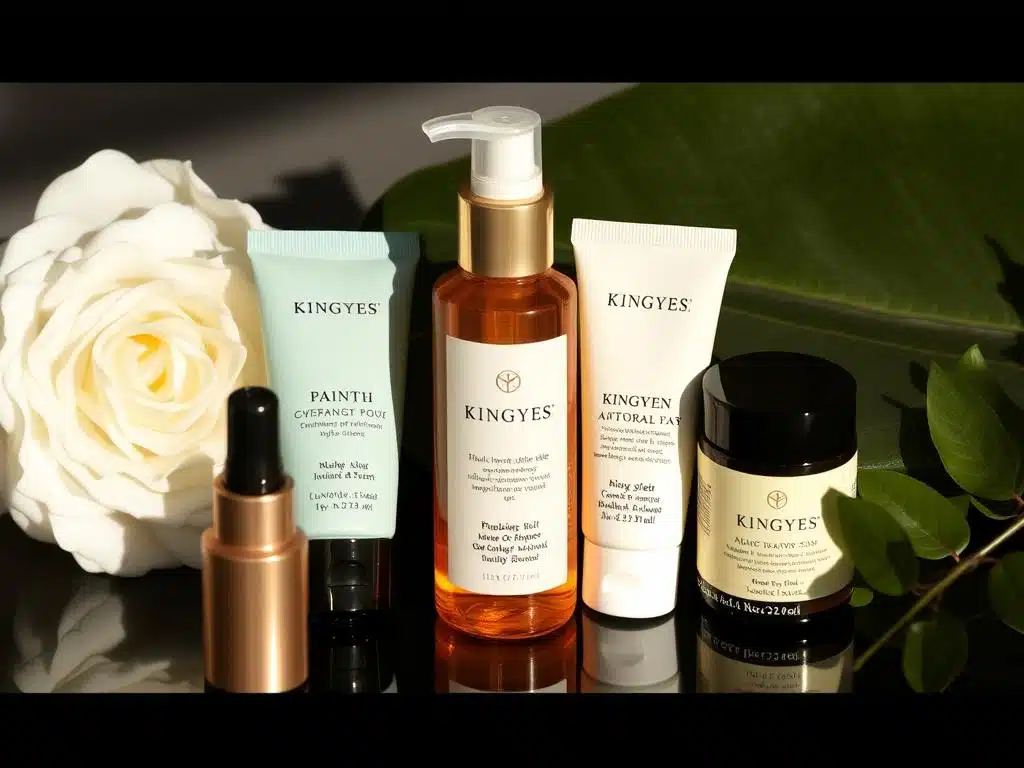
How To Sell Cosmetics On WeChat?
Are you ready to tap into the world’s largest beauty market?

How To Sell Cosmetics On Shopee?
Looking to sell cosmetics and tap into the booming e-commerce market of Southeast Asia?
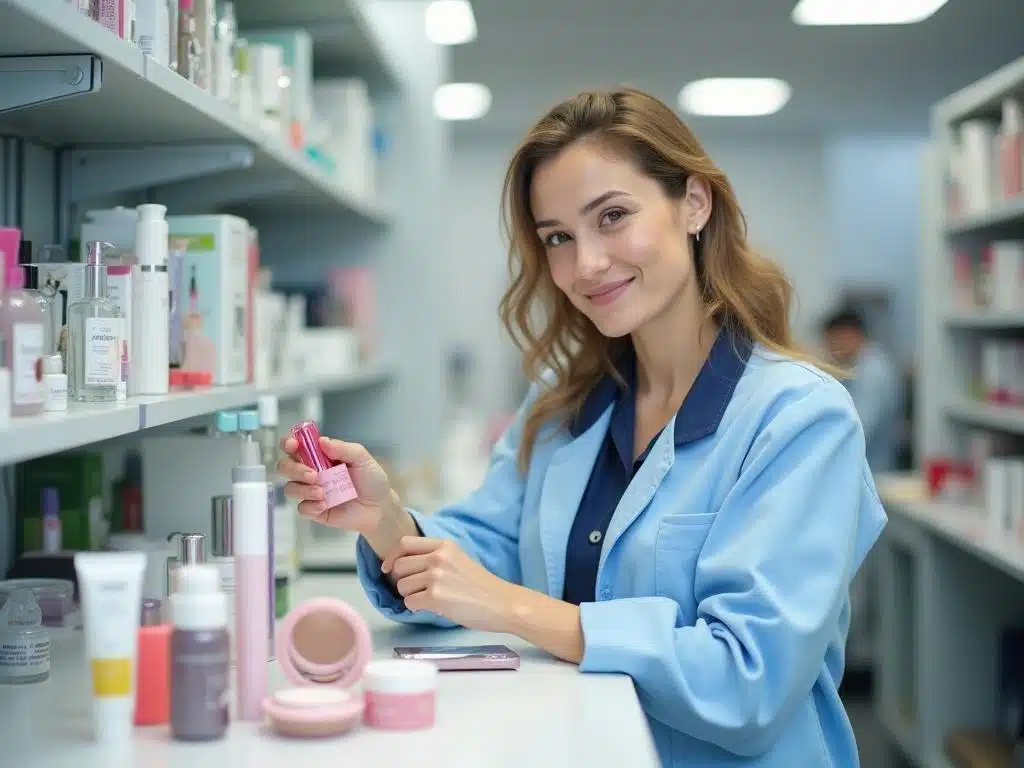
How To Cooperate With Cosmetics Factories?
In the dynamic and competitive beauty industry, partnering with the right cosmetic manufacturer is paramount to the success of your cosmetics business.

